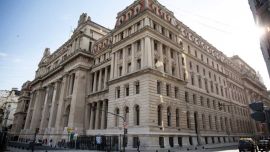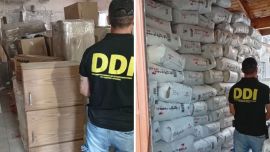Prices in Argentina rose by 2.7 percent in June, government data revealed Tuesday, with inflation coming in below three percent for the first time this year.
The data, released by the INDEC national statistics bureau, also showed that the rate of inflation had decreased for the third consecutive month. From 4.7 percent in March, price hikes then decreased to 3.4 percent in April and 3.1 percent in May.
The two sectors that saw the highest price increases in June were communications (7.1 percent) and recreation and culture (3.7 percent). Alcoholic Beverages and Tobacco prices rose 2.7 percent, and Non-Alcoholic Foods and Beverages prices, a key figure for consumers, rose 2.6 percent.
The region of the country with the largest rise in prices was the northeast with an increase of 2.9 percent while Greater Buenos Aires was slightly below average at 2.6 percent.
As expected, interpretation of the figures was divided along political lines. While supporters of the government heralded the news as proof they are tackling Argentina’s economic crisis, opponents were quick to point out that cumulative inflation for the first six months of 2019 totals 22.4 percent, reaching 55.8 percent over the last 12 months.
“In the first half of this year, inflation has arrived at the figure that the government projected for all of 2019,” ex-Cabinet chief and Frente de Todos candidate for national deputy Sergio Massa lamented over Twitter. “We must put an end to this failure in December to bring Argentina back to its feet and begin building the country we deserve.”
In a press conference following the release of the report, Central Bank President Guido Solaris expressed cautious optimism.
“Inflation continues to be very elevated but it is decreasing,” he said. “The process is not linear. We should not expect lower inflation every month but we are seeing a clear trend. We believe that the figures for the month of July will be even lower.”
‘Good number’
Recognising the trend, economist and director of the EPyCA consultancy firm Martín Kalos told the Times that to contextualise the ostensibly “good number,” it is important to keep in mind that “2.7 percent is what most countries have in one year.”
Kalos also said that there is a limit to how much more inflation can fall, given that the deceleration can be mostly attributed to the government’s decision to freeze unpopular hikes in public service tariffs – most notably gas – ahead of October’s election and because the exchange rate has remained relatively stable.
“Two of the main drivers of inflation in the previous months were food and house-related costs but in June both of these were below average,” Kalos pointed out.
Housing, water, electricity and gas prices rose 2.7 percent last month, according to INDEC
“What government is doing is postponing tariffs until after the election and keeping the dollar quiet for the next few months,” Kalos said.
Stability for the peso has been assisted by the International Monetary Fund’s (IMF) decision to grant the government freedom to intervene in the dollar market, which has helped keep the exchange rate relatively stable in past months.
IMF adjusts forecasts
The inflation data arrives just a day after the IMF slashed its 2020 growth forecast for Argentina in half to 1.1 percent, much lower than the government’s projections of 3.5 percent. It also raised its inflation forecasts for 2019 to 40 percent and its 2020 projection to 32 percent.
According to Kalos, this is nothing new for Argentina economists. In fact, he said, it represents the best case scenario.
“The IMF has finally reached the same consensus as everyone else in Argentina: that inflation cannot be lower than 40 percent when we reach December,” he said, adding that most consultancy firms and economists agree that if there is a “run to the dollar” or another sharp devaluation of the peso, inflation will come in even higher than 40 percent.


















Comments